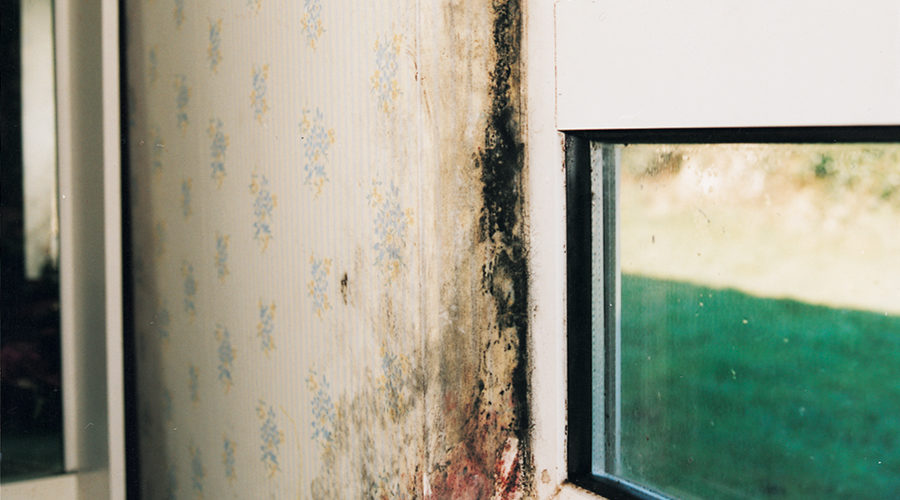Leading British ventilation manufacturer, Vent-Axia is committed to improving public health by improving indoor air quality (IAQ) through ventilation, so welcomes the Housing Ombudsman’s report ‘Spotlight on Damp and Mould. It’s not lifestyle’.
Vent-Axia
The report calls for landlords to take a ‘zero-tolerance’ approach to damp and mould as well as considering proactive actions to identify homes that have or may be at risk of developing problems rather than waiting for residents to report issues.
According to the 2019-20 English Housing Survey, serious condensation and mould problems were present in at least one room in 133,000 (3%) social sector homes and 192,000 (5%) of homes lacked thermal comfort. Homes built between 1981 and 1990 were most likely to fail the decent homes standard for thermal comfort.1 The Housing Ombudsman’s report recognises the challenges for landlords in tackling these issues – including overcrowding, poverty, the age and design of homes – but says landlords should avoid inferring blame on residents due to ‘lifestyle’. The document identifies best practice and makes 26 recommendations for landlords to implement, including:
• Greater use of intelligence and data to prevent issues and ensure robust record keeping
• Adopting a consolidated policy for actions it may take based on diagnosis
• Ensuring strategies for delivering net zero homes consider and plan for any potential unintended consequences around damp and mould
• Ensure staff and contractors have appropriate expertise to properly diagnose and respond to reports of damp and mould.
Within the report survey responses, resulting from the Housing Ombudsman’s call for evidence, state, “…the top three causes of damp and mould are: 1. Ventilation 30%, 2. Leaks 23%, 3. Structural 20%. Condensation was fourth with 18%.” This confirms the importance ventilation plays in improving indoor air quality and tackling condensation and mould.
“We welcome the Housing Ombudsman’s report on damp and mould since Vent-Axia is committed to improving public health by improving indoor air quality through ventilation. We have a long history of working with social housing landlords on improving ventilation for their residents to help tackle damp and mould in the home by supplying ventilation for both planned and reactive maintenance. We have also provided support to our customers through a dedicated social housing microsite, leaflets for residents, as well as running a #StayHealthy social media campaign throughout the pandemic to offer easy tips to help improve indoor air quality and help avoid condensation and mould”, says Lena Hebestreit, Marketing Manager at Vent-Axia. “As we move towards Net Zero it becomes even more important to consider ventilation in the home since when making a home more airtight through energy efficiency measures, such as insulation, it is vital to consider improving ventilation too since without sufficient ventilation indoor air quality can deteriorate and occupants can have ongoing issues with condensation and mould.”
Since 1936, Vent-Axia has been working hard to provide ventilation solutions to improve IAQ for homes and buildings. The company has a long history of working with social housing landlords and residents to improve ventilation and indoor air quality to combat condensation and mould in homes. Throughout the pandemic, when residents were spending more time at home, the company provided its customers with helpful leaflets and advice on how to improve indoor air quality and help stay healthy. The company also has a useful social housing microsite, which is designed to offer ventilation information and solutions to registered providers, contractors, landlords and residents, offering a huge vault of free resources. Providing the social housing sector with vital guidance on how to avoid or combat condensation and mould by improving indoor air quality, the website offers visitors a route to their individual ventilation solution. Visitors to the site can find expert information and direction to help improve IAQ in the social housing sector and so help protect the health of residents.
For social housing refurbishments, Positive Input Ventilation (PIV), such as Vent-Axia’s Lo-Carbon PoziDry Pro and Lo-Carbon PoziDry Compact Pro, offer filtration up to ISO ePM2.5 70% (F7 grade). Designed to improve IAQ and prevent moisture build-up within social housing properties, the PIV range provides a highly effective solution to help households and landlords control condensation and mould, as well as offering high levels of air filtration.
The PoziDry Pro and PoziDry Compact Pro also come with Smart Sense technology to help reassure landlords that they are compliant with the Homes (Fitness for Human Habitation) Act 2018. The Smart Sense datalogger tracks fan usage to ensure it is used as intended. This includes data such as days run, hours on trickle or boost, and even more specifically, hours run on boost triggered by the humidity sensor. If a fan has been switched off and mould appears, the landlord will realise why and can discuss a solution with residents. This helps landlords make homes safer for residents by helping to avoid condensation and mould which can lead to respiratory problems and allergies.
For further information on all products and services offered by Vent-Axia, please get in touch.









